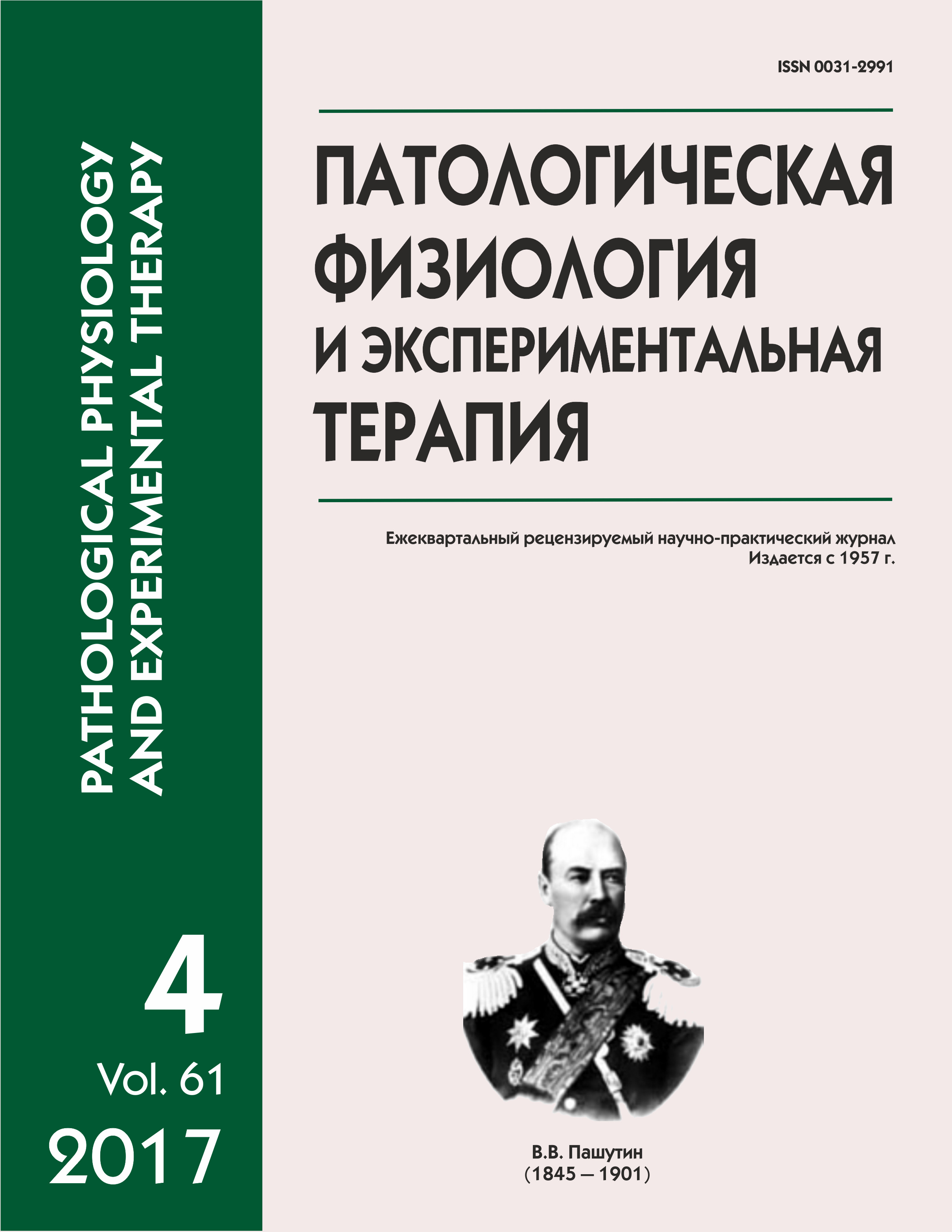Evaluating the patency of PTFE grafts in reconstruction of great veins (experimental study)
Abstract
Aim. To study patency of synthetic, porous polytetrafluoroethylene (PTFE) conduits in reconstruction of great veins and to justify their use in clinical practice. Methods. The study was conducted on 70 New Zealand male rabbits weighing 3.0-3.5 kg. Infrarenal linear prosthetic reconstruction of posterior vena cava was performed in 40 rabbits. Infrarenal linear prosthetic reconstruction of abdominal aorta was performed in 30 rabbits (control group). All surgical procedures were conducted in aseptic conditions under intramuscular anesthesia. Porous PTFE conduits with 4 mm internal diameter and 20 mm length (7th generation, 2010; ZAO NPK Ecoflon, Russia) were used for prostheses of aorta and posterior vena cava. All anastomoses were made of atraumatic 7/0-8/0 ligature using microsurgical instruments. No anticoagulant therapy was used throughout the experimental period. During the study, conduit patency was controlled by ultrasound Doppler monitoring of blood flow velocity distal and proximal to the conduit and direct, invasive BP measurements during the surgery and at 3, 10, 30, 90, 180, and 270 days of surgery. At the end of experiment, the conduit was removed from the animal together with adjacent structures. The Mann-Whitney U-test was used for comparison of BP and blood flow velocity distal and proximal to the conduit. Differences were considered significant at p ?0.05. Results. Significant differences between values of linear blood flow velocity and BP distal and proximal to the conduit were absent in the entire follow up period. The patency of porous PTFE conduits was similar in both arterial and venous positions. No conduit thrombosis or hemodynamically significant stenosis were observed in arterial or venous positions in the entire follow up period. Conclusion. The patency of PTFE conduits in the venous position is similar to and not different from the arterial position. The obtained experimental data support the use of synthetic PTFE conduits for reconstruction of great veins in clinical practice.
Conclusion. The polytetrafluoroethylene conduits patency of in venous position is similar and does not differ from arterial position. Obtained experimental data gives the opportunity for synthetic polytetrafluoroethylene conduits appliance for main vein reconstruction in clinical practice.
Downloads
References
2. Voskanyan S.E., Kotenko K.V., Trofimenko Yu.G., Artem’ev A.I., Zabezhinskiy D.A., Shabalin M.V. Experience of radical surgical treatment of locally advanced pancreatic head cancer with tumor invasion of the main vessels of the mesenteric portal system and visceral branches of the abdominal aorta. Sovremennye tekhnologii v meditsine. 2010; 1(2): 44-5. (in Russian)
3. Voskanyan S.E., Artem’ev A.I., Naydenov E.V., Shabalin M.V., Zabezhinskiy D.A., Kolyshev I.Yu. The results of the use of PTFE-conduits in the reconstruction of the main veins of the abdominal cavity in locally advanced pancreatic cancer. Saratovskiy nauchno-meditsinskiy zhurnal. 2015; 11(4): 668-72. (in Russian)
4. Voskanyan S.E., Trofimenko Yu.G., Artem’ev A.I., Naydenov E.V., Murzabekov M.B., Shabalin M.V. et al. The results of the use of PTFE-conduits in the reconstruction of the main veins of the mesenteric portal system in radical surgery of pancreatic cancer. Almanakh instituta khirurgii im. A.V. Vishnevskogo. 2011; 6(2): 165-6. (in Russian)
5. Radaelli S., Fiore M., Colombo C., Ford S., Palassini E., Sanfilippo R. et al. Vascular resection en-bloc with tumor removal and graft reconstruction is safe and effective in soft tissue sarcoma (STS) of the extremities and retroperitoneum. Surgical Oncology. 2016; 25(3): 125-31.
6. Hwang S, Ha T.Y., Jung D.H., Park J.I., Lee S.G. Portal vein interposition using homologous iliac vein graft during extensive resection for hilar bile duct cancer. Journal of Gastrointestinal Surgery. 2007; 11: 888-92.
7. Chu C.K., Farnell M.B., Nguyen J.H., Stauffer J.A., Kooby D.A., Sclabas G.M. et al. Prosthetic graft reconstruction after portal vein resection in pancreaticoduodenectomy: a multicenter analysis. Journal of the American College of Surgeons. 2010; 211(3): 316-24.
8. Faynshteyn I.A., Tyurin I.E., Molchanov G.V., Sholokhov V.N., Kholyavka E.N., Ivanov Yu.V. et al. Reconstruction of splenoportomesenterial joints with pancreatoduodenal resection. Annaly khirurgicheskoy gepatologii. 2008; 13(4): 33-6. (in Russ)
9. Andrews K.D., Feugier P., Black R.A., Hunt J.A. Vascular prostheses: performance related to cell-shear responses. Journal of Surgical Research. 2008; 149(1): 39-46.
10. Norgren L., Hiatt W.R., Dormandy J.A., Nehler M.R., Harris K.A., Fowkes F.G. TASC II Working Group. Inter-Society Consensus for the Management of Peripheral Arterial Disease (TASC II). Journal of Vascular Surgery. 2007; 45(S): 5-67
11. Kulikov V.P. Ultrasonic diagnostics of vascular diseases. A guide for doctors. 1st ed. [Ul’trazvukovaya diagnostika sosudistykh zabolevaniy. Rukovodstvo dlya vrachey. 1-ye izd.]. Moscow: STROM; 1999. (in Russian)
12. Imparato A.M., Bracco A., Kim G.E., Zeff R. Intimal and neointimal fibrous proliferation causing failure of arterial reconstructions. Surgery. 1972; 72(6): 1007-1017.
13. Hirsch G.M., Karnovsky M.J. Heparin inhibition of vein graft lesions. American Journal of Pathology. 1991 Sep; 139(3): 581-7.
14. Meng Q.H., Irvine S., Tagalakis A.D., McAnulty R.J., McEwan J.R., Hart S.L. Inhibition of neointimal hyperplasia in a rabbit vein graft model following non-viral transfection with human iNOS cDNA. Gene Therapy. 2013; 20(10): 979-86.






